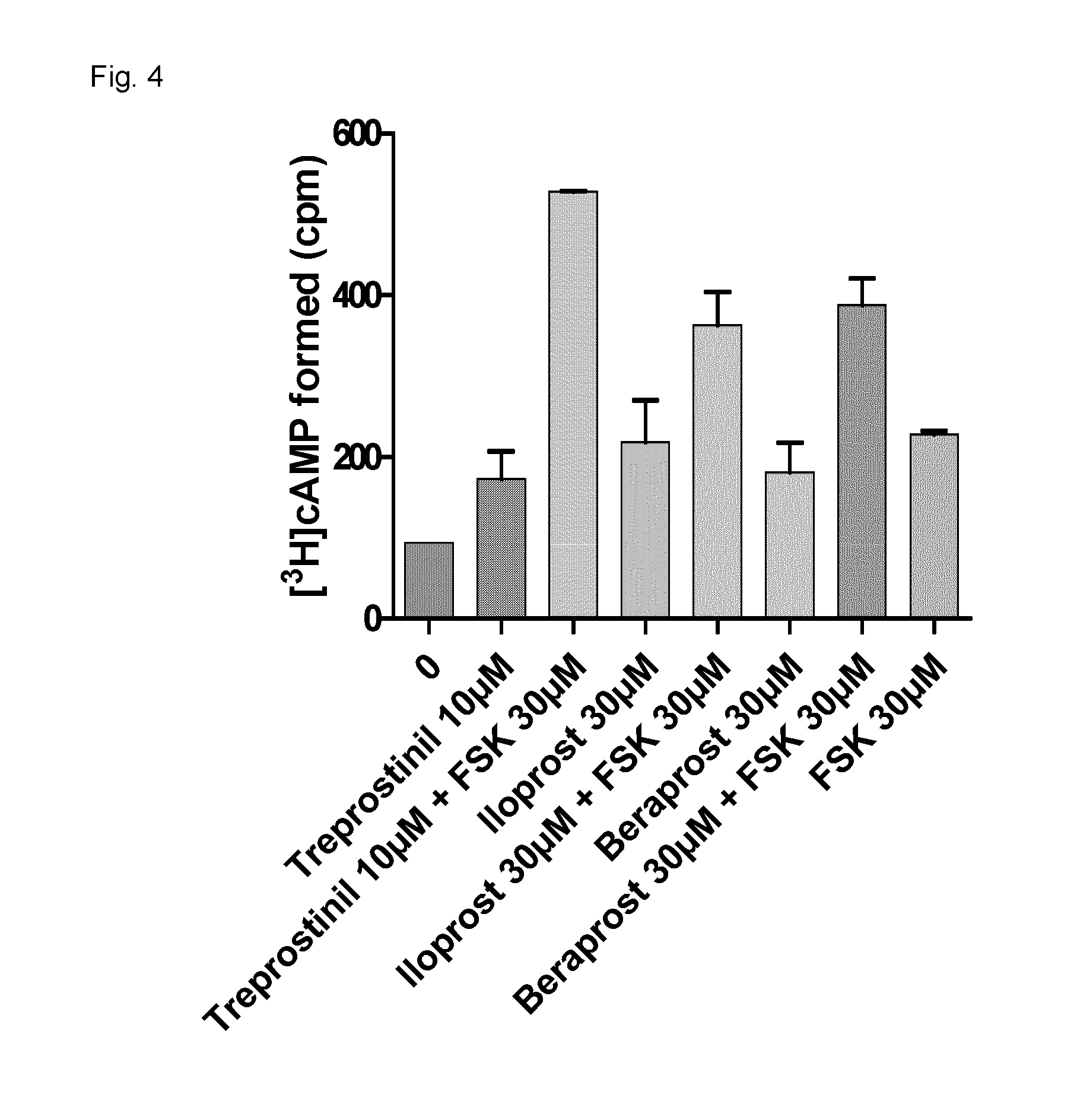Method for enhancing engraftment of haematopoetic stem cells
a technology of stem cells and engraftment, applied in the field of enhancing engraftment of haematopoetic stem cells, can solve the problems of high disadvantage of cholera toxin, rapid dehydration and other factors associated with cholera, and inability to use cholera toxin for human us
- Summary
- Abstract
- Description
- Claims
- Application Information
AI Technical Summary
Benefits of technology
Problems solved by technology
Method used
Image
Examples
example 1
Materials and Methods
[0118]Isolation of bone marrow stem cells
[0119]Ten mice (C57BL / 6) were sacrificed by cervical dislocation. The long bones of the hind limbs (i.e., femora and tibiae) were freed of muscle and connective tissue and flushed with RPMI medium using a syringe and 271 / 2 G needle. The cell suspension was freed from visible connective tissue, collected and transferred to centrifuge tubes. Cells were harvested by centrifugation (1,200 rpm / −100 g for 5 min) and resuspended in 3 mL erythrocyte lysis buffer (0.15 M NH4Cl, 10 mM KHCO3, 0.1 mM EDTA, pH adjusted to 7.2 to 7.4). The cell suspension was incubated for 2 min at 20° C. followed by 4 min on ice. Thereafter, RPMI (10 mL) was added and the cells were harvested by centrifugation and counted. The typical yield of cells was 3*107 / mouse.
[0120]Cells were resuspended in ice-cold PBS (phosphate buffered saline) containing 2% FCS (fetal calf serum) at a cell density of 2.5*108 cells / mL to which a cocktail of biotinylated antib...
example 2
[0145]Isolation of Bone Marrow Stem Cells
[0146]C57BL / 6 and B6SJL mice were sacrificed and the bone marrow stem cells were isolated as described in Example 1.
[0147]In Vitro Pre-treatment of Isolated Stem Cells
[0148]Bone marrow stem cells from C57BL / 6 or C6SJL mice were pretreated in vitro with choleratoxin (CTX) or Treprostinil+Forskolin (FSK) and the stem cells are marked with Ly5.2 or Ly5.1.
[0149]In a first experiment, bone marrow stem cells from C57BL / 6 mice were used without pretreatment and the stem cells were marked with Ly5.2. Bone marrow stem cells from C6JL were pretreated in vitro with choleratoxin or Treprostinil+Forskolin and stem cells were marked with Ly5.1.
[0150]For comparative studies, a 1:1 mix of Ly5.1+and Ly5.2+cells are introduced into mice by bone marrow transplantation and the ratio of Ly5.2 and Ly5.1 positive blood cells was measured initially. Then 16 weeks after bone marrow transplantation blood cells outgrowth was measured. The results are shown in FIG. 7 wh...
PUM
 Login to View More
Login to View More Abstract
Description
Claims
Application Information
 Login to View More
Login to View More - R&D
- Intellectual Property
- Life Sciences
- Materials
- Tech Scout
- Unparalleled Data Quality
- Higher Quality Content
- 60% Fewer Hallucinations
Browse by: Latest US Patents, China's latest patents, Technical Efficacy Thesaurus, Application Domain, Technology Topic, Popular Technical Reports.
© 2025 PatSnap. All rights reserved.Legal|Privacy policy|Modern Slavery Act Transparency Statement|Sitemap|About US| Contact US: help@patsnap.com



